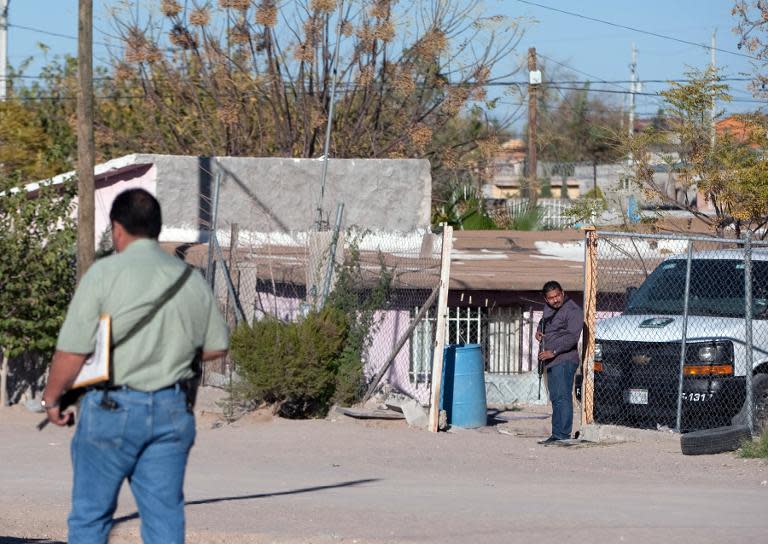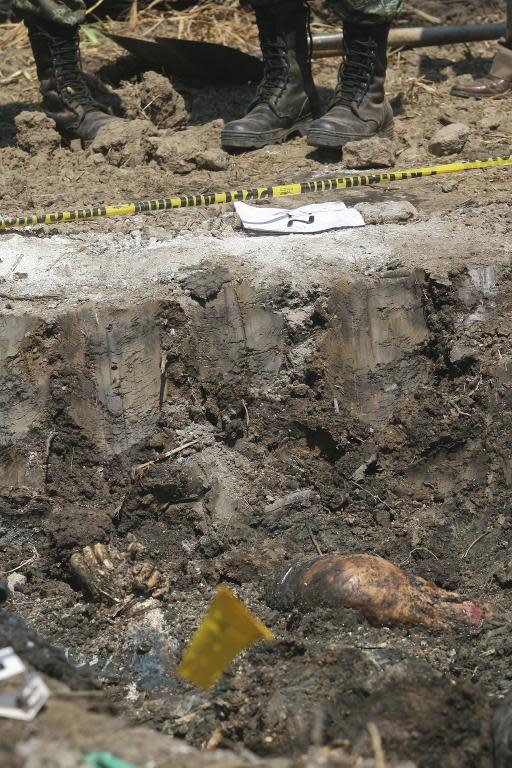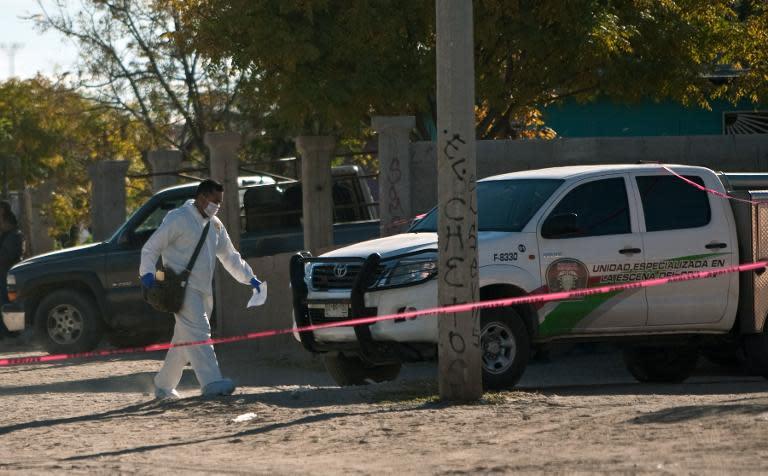New mass graves in Mexico dredge up plight of missing
Amid Mexico's continuous drug conflict, the recent discovery of dozens of bodies in mass graves has led some to describe the plight of the country's disappeared as a national emergency. At least 54 corpses have been recovered in clandestine pits in three states this month alone, including 33 in a western region plagued by violent cartels. The discoveries have left authorities scrambling to identify the dead in a country where thousands of people have been missing for years. "We have a very serious humanitarian crisis, a national emergency regarding the disappeared," Julio Hernandez, a member of the government's victim care commission, told AFP. The prosecutor's offices in Mexico's 31 states and the capital need more forensic experts and DNA laboratories, Hernandez said, comparing the situation to the Balkan wars. Some of the dead found at the border of the western states of Jalisco and Michoacan are mere bones, suggesting they were buried months ago. Other corpses found in the southwest and north of the country may be more than a year old. The appearance of so many mass graves within such a short period revived memories of the gruesome finds regularly made during the 2006-2012 presidency of Felipe Calderon, who had declared war against the cartels. "The state has ignored the search of thousands of disappeared," Hernandez said. More than 26,000 missing The attorney general's office documented the exhumation of 847 bodies in mass graves between December 2006 and September 2011, according to the most recent official figures obtained by AFP through a freedom of information request. Most victims were in the northern states of Tamaulipas, Durango and Nuevo Laredo, all hotbeds of conflict between cartels such as the Zetas, Gulf and Sinaloa gangs. And the great majority, 656, were found in a nine-month period in 2011 alone, compared to just 15 in 2007. The bodies have included enemies of cartels and innocent bystanders, as well as migrants and women. More than 70,000 people have died in Mexico since Calderon sent troops to the streets to contain the cartels. Another 26,121 people disappeared during Calderon's six-year term, according to an official database that the administration of President Enrique Pena Nieto is updating. Interior Minister Miguel Angel Osorio Chong said in May that the figure would likely be lower because many of the people reported missing simply left their homes for personal reasons or emigrated. But the government has yet to release a new figure. Pena Nieto also created a special unit dedicated to finding the missing, but the fact that only 12 prosecutors were assigned to the job has drawn criticism. An official in the attorney general's office, who requested anonymity, said identifying a body depends on the state of decomposition and whether the person matches a list of missing people. "It's more problematic when they are migrants going through the country" since they often don't match any missing list, the official said. In the case of the bodies found in 19 pits at the Jalisco-Michoacan border, authorities expect to identify the individuals since they are believed to be from the region, the official said. Those mass graves were found as part of an investigation into the disappearance of two federal officers allegedly detained by Michoacan municipal cops, who handed them over to the Jalisco New Generation cartel. The official said the federal agents are not among the bodies, which were sent to the Jalisco state prosecutor's forensic office for identification. A son's skull The discovery of mass graves brings anxiety but also hopes of closure to countless families who have desperately sought any sign of their missing relatives for years and have little faith in overwhelmed state authorities. Even Mexico City, considered a relative oasis from the drug cartel violence plaguing many parts of the country, was recently hit by the discovery of a mass grave near the capital. The bodies of 13 young people were found outside the city in August, three months after they were kidnapped from a downtown bar in broad daylight. Authorities say the victims were identified through DNA samples, but some parents refuse to believe them. "If they told you this is your son, would you believe it?" Leticia Ponce said, showing a cell phone picture of a skull that authorities said belonged to her 16-year-old Jerzy Ortiz. "As long as I don't see my son dead or alive, for me he is missing."




